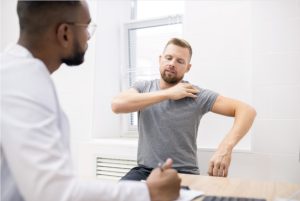Addressing chronic pain in physiotherapy
On the occasion of our intervention at the congress of the SED (Spanish Pain Society) we do not want to miss the opportunity to talk about chronic pain and the role of physiotherapy and exercise in its alleviation and cure.
Let us remember that pain is nothing more than a physiological alarm signal in the face of a dangerous situation for the organism. A complex process by which the peripheral nervous system (PNS) transmits information about noxious stimuli to the medulla and the brain, where it will be interpreted and experienced as pain.
When pain lasts more than 3 months, it is defined by consensus as chronic (although this is a simplification that cannot cover all existing pathologies).
It is also considered a major health problem affecting 25-35% of the world’s adult population. (Aitken D et al., 2015) and whose cost is estimated to be incalculable. Chronic low back pain alone represents an investment of 350-560 million dollars a year in the United States. (Puentedura et al. 2016).

Central sensitization: chronic pain, a disease of the brain.
Borisovskaya et al. published an update on chronic pain in 2020 that defined it as a brain disease. And they were not wrong.
Central sensitization is an underlying process that occurs when chronic pain occurs and describes functional changes in the nervous system that cause a perpetuation of the nociceptive stimulus even when there is no longer actual tissue damage. In short, the PNS continues to send nociceptive information to a central nervous system (CNS) that minimizes its inhibitory response to the stimulus.
The cortical disorganization resulting from this situation causes the patient to acquire a memory of pain that is directly related to episodes of kinesiophobia that produce pain without nociception.
This is why it is essential to re-educate the patient with exercise and physiotherapy. The neuroplasticity of the nervous system allows us to reverse these processes of central sensitization so that the patient can be completely rehabilitated.
Many studies have shown that therapeutic exercise improves chronic pain even when there is no evidence of significant results in strength or endurance.
For this, from TRAK, we continue to champion exercise as one of the best clinical tools in the daily practice of physical therapy.
Physiotherapy in chronic pain: therapeutic exercise
Physical activity has analgesic effects and reduces the presence of pro-inflammatory cytokines, reversing hyperalgia: moderate aerobic exercise lasting about 30 minutes reverses hypersensitivity by increasing endogenous opioids and suppresses excess substance P, activating central pain inhibitory pathways and modulating pain perception (Urtubia et al. 2015)
It is not surprising then that in the case of a patient with low back pain, for example, exercise protocols are used to increase the pain threshold. All this without disregarding the various physiotherapy techniques that can be used in this and other cases, from massage therapy to percutaneous electrostimulation. Some simply for analgesic purposes and others to achieve the correct functional rehabilitation of the patient.
Let us remember, once again, that exercise must be adapted to each patient, especially if the patient suffers from chronic pain, as they often have biomechanical and functional deficiencies, muscle weakness and flexibility resulting from a long period of inactivity.
Monitoring is of vital importance in these cases and special care must be taken in some pathologies such as severe osteoarthritis or fibromyalgia in which a deficiency of the hypothalamic-pituitary-adrenal axis causes an increase in pain as a result of a dysfunction in the stress response system (Daenen L et al., 2015)
To conclude, we recommend that when prescribing your program, you should emphasize the patient’s motivation to increase their adherence to it, as most patients will reject the idea of physical exercise for fear of a relapse or an increase in pain.
As we always say, it is not only about treating, but also about accompanying.
